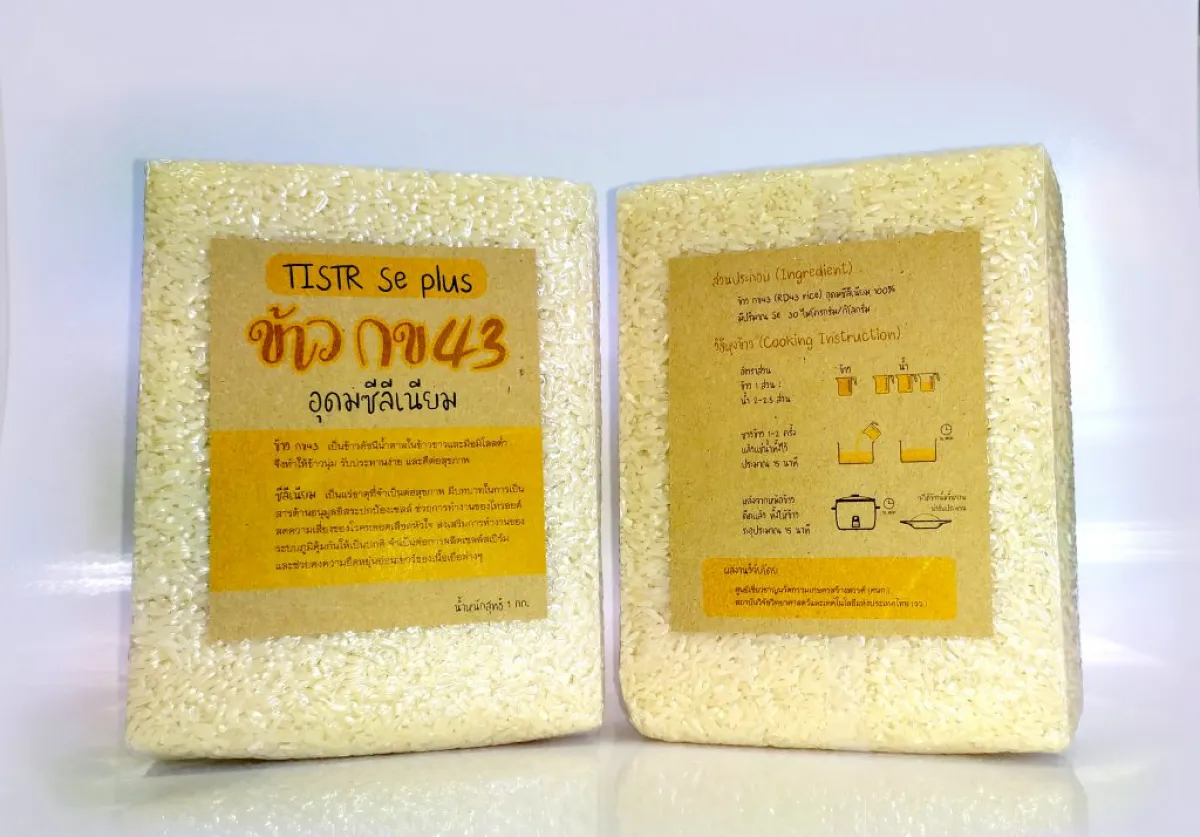
"Selenium" is a mineral that is essential for the body, but cannot be produced by the body itself, and must be obtained from dietary intake. Selenium is not commonly found in most plants, but it is present in certain foods such as mackerel, catfish, crab, oysters, chicken eggs, black tiger prawns, and cassia leaves. As a component of several enzymes in the form of selenoproteins, one of the important enzymes is Glutathione peroxidase, which acts to eliminate free radicals in the body, preventing tissue damage. It supports the normal functioning of the thyroid gland in conjunction with vitamins E, C, and A. It plays a role in the functioning of the immune system, the production of red blood cells, and the maintenance of hair and nail health.
While "rice" is a staple food for Thais, Jasmine rice (annual rice) has been found to accumulate more selenium than other rice varieties (rainfed rice). Selenium is an antioxidant mineral that boosts immunity. Although the body needs only a small amount of selenium each day, varying by age, a deficiency can make the body more susceptible to infections.
Therefore, the Thailand Institute of Scientific and Technological Research has proposed an idea to fortify rice with selenium. This is another approach in functional food production by enhancing the nutritional value of rice through fertilization. This method is not complicated, does not rely on advanced equipment, and can be implemented by farmers themselves.
From the trials with safe rice farmers in Wang Bua, Nakhon Nayok Province, producing selenium-enriched Khao Dok Mali 105 rice, it was found that the yield contained 11 micrograms of selenium per 100 grams. Together with farmers in Bang Len, Nakhon Pathom Province, they tried producing selenium-enriched rice, Khao Kho 43, which yielded rice containing 3 micrograms of selenium per 100 grams. In addition, farmers in Suphan Buri Province were encouraged to produce Jasmine rice 105, which contained 3.5 micrograms of selenium per 100 grams.
In addition, rice straw, a by-product of selenium-enriched rice production, also has high selenium content. This can be used to cultivate economic mushrooms, such as Grey Oyster Mushrooms and Hungarian Oyster Mushrooms. The selenium-rich rice straw aids mushroom growth, leading to more fruiting bodies per bunch, higher quality and quantity of mushroom yield, and increased selenium content.
The production of selenium-enriched rice and mushrooms is considered a value-added strategy for products without any additional production processes, with only a 1% increase in cost but generating more than a 20% increase in income.
The research and development of "selenium-enriched rice" is therefore another money-making innovation that supports practical implementation, contributing to economic stability at both the household and national levels.
Source: Expert Centre of Innovative Agriculture, Thailand Institute of Scientific and Technological Research
Tel. +66 2577 9300